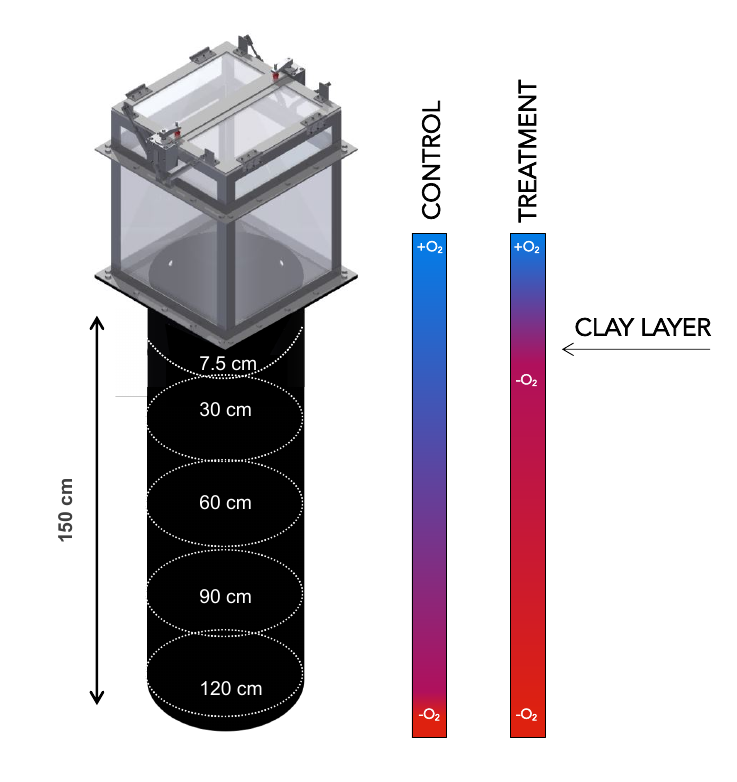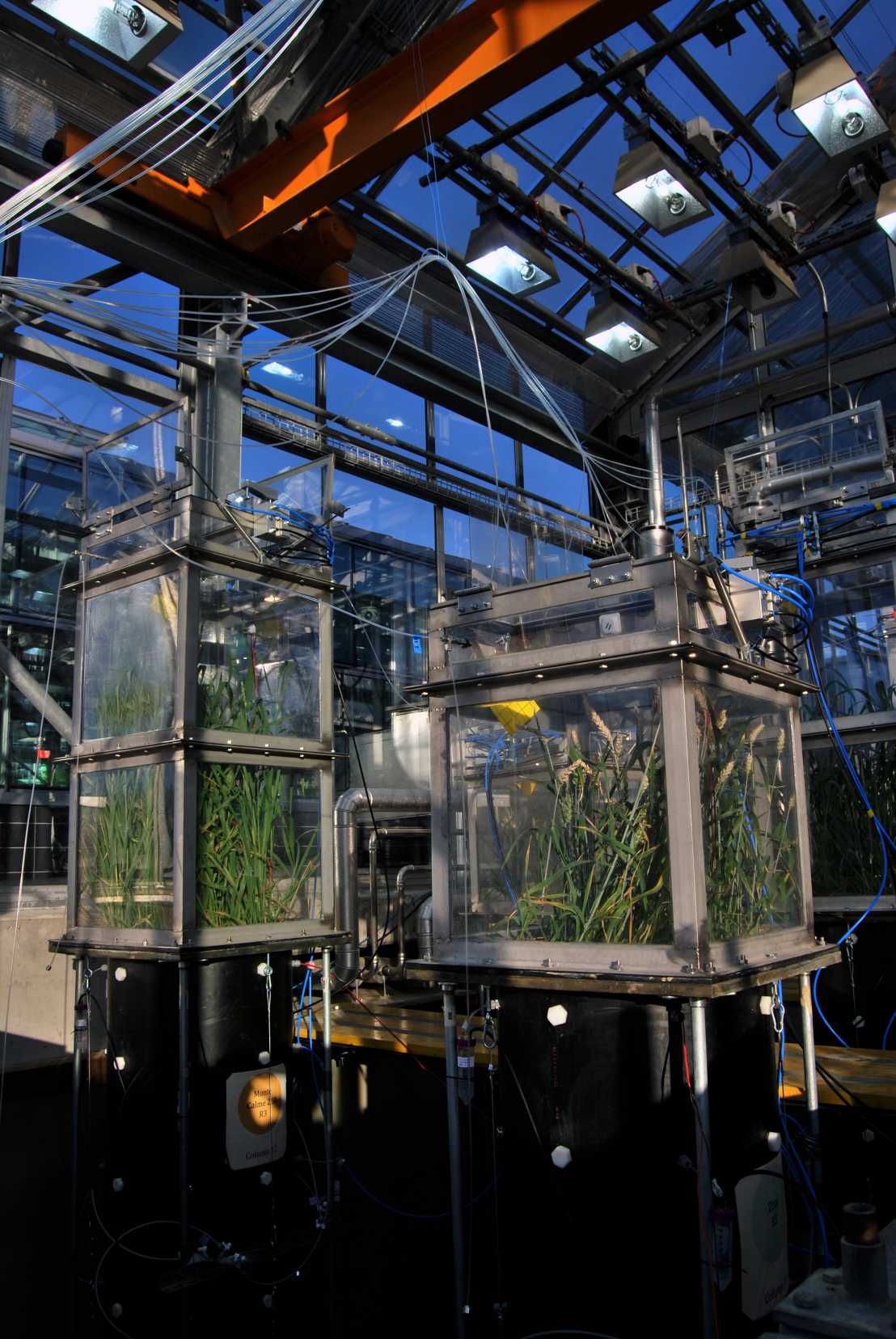Mesocosm Facility Eschikon

The Sustainable Agroecosystem Group at ETH Zurich operates a mesocosm platform at the research station for plant sciences in Lindau. Soil columns are situated in a greenhouse and monitored for surface emissions of nitrous oxide, carbon dioxide and methane by an automatic chamber system, while soil gases and various soil parameters can be sampled in the depth profile. The experimental setup consists of 12 cylindrical lysimeters with a height of 1.5 m and a diameter of 0.5 m. Continuous in-situ monitoring of surface fluxes from the chamber headspace N2O is measured by a external pageAerodyne dual laser trace-gas analyzercall_made whereas for CO2 and CH4 an external pageLGR portable greenhouse gas analyzercall_made is used.
The platform allows the SAE group to conduct agricultural, biogeochemical, and ecological research along the atmosphere-plant-soil continuum. Access points at 5 different depths of the soil columns allow the investigation of processes in deeper soils and across the soil profile. At each depth, the facility is equipped with sensors for soil moisture, temperature, and oxygen content and allows for soil, gas, and porewater sampling. Therefore, it provides the ideal platform to study the effect of different crops (i.e. old versus new crop varieties, grasses versus legumes, etc.) on soil processes (i.e. soil structure generation and breakdown, soil gas diffusion, nutrient cycling, nutrient losses through leaching and gaseous emissions, microbial community dynamics, etc.) under different management practices (i.e. irrigation, inorganic fertilization, biofertilization (i.e. sludge, urine derived fertilizer, compost, etc).

We are using the mesocosm platform in order to investigate N2O formation and consumption processes along the soil depth profile using state of the art isotope and bio-molecular approaches. The mesocosm platform is currently used to investigate the nitrogen (N) dynamics in agricultural soils. More specifically, the platform is used to track the fate of N species through the soil profile and to assess N losses to the atmosphere (as N2O) or into streams due to nitrate leaching. Losses of either N species are a significant threat to ecosystems as well as the global climate and arise from today's agricultural systems. Our specific research questions are how soil structure (i.e. compaction), watering regime, and the form of N input drive N flows through the soil profile. We also connect these findings to microbial activity and community analysis.
We envision the mesocosm platform to be open to researchers from different fields, both nationally as well as internationally, as it provides a rare but highly capable infrastructure to conduct interdisciplinary research under defined environmental conditions.
Preliminary interactive data
Contact: Roman Hüppi, Matti Barthel or Johan Six
